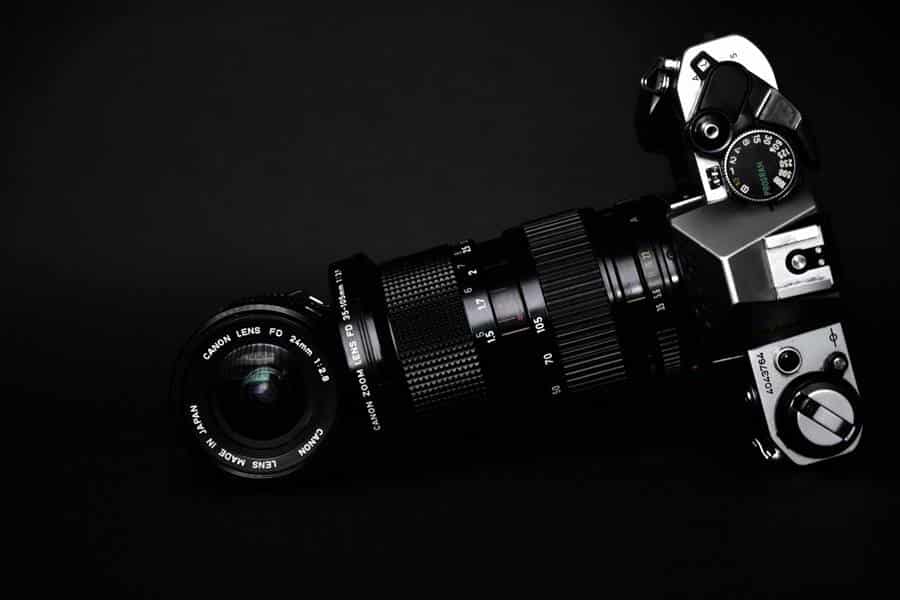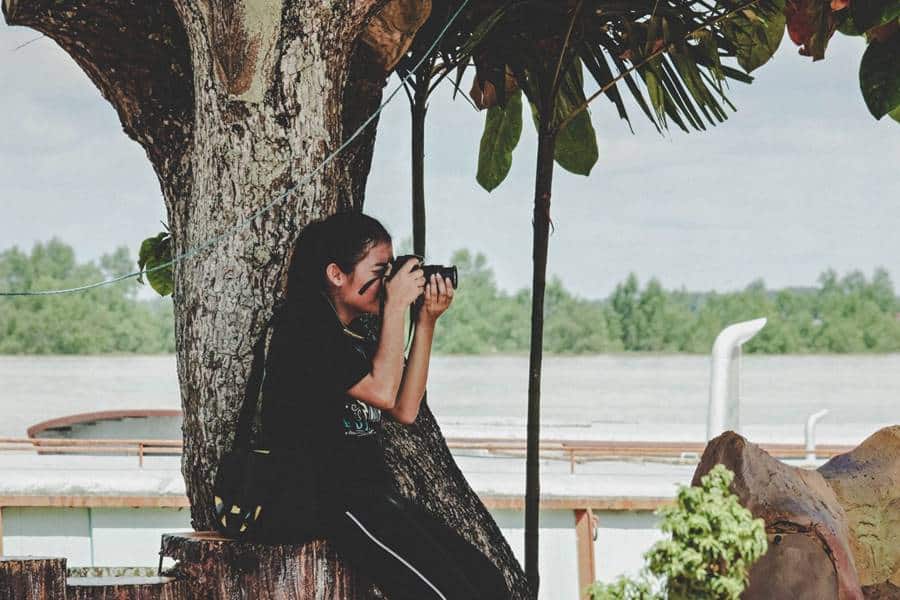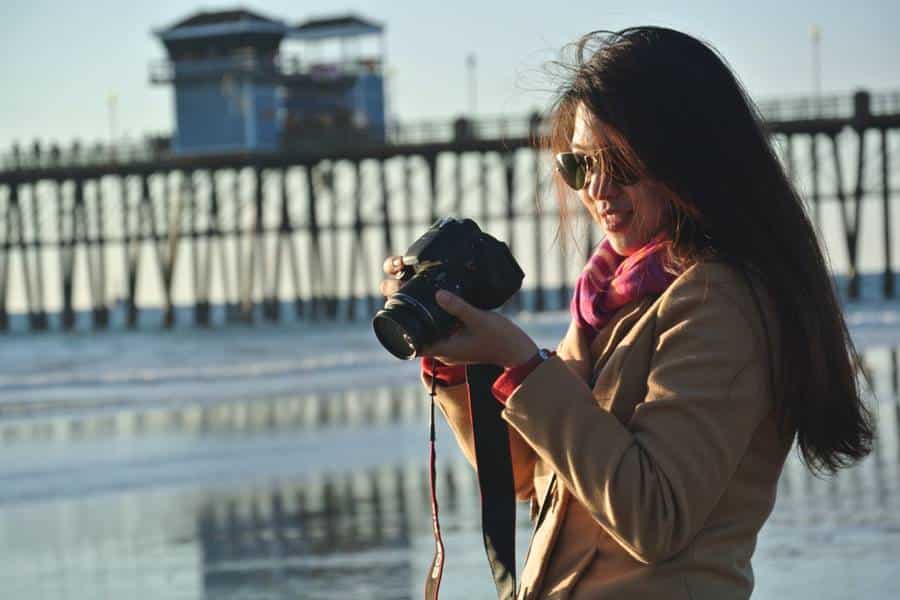The article will be of interest to those who have decided to seriously engage in photography or video filming and want to buy their first lens. Those who are thinking about buying their first interchangeable lens camera and are at the stage of choosing their first and so far, the only lens.
Buy the Best Lens First
I decided to share my experience of choosing the first lens for a DSLR or mirrorless camera, because when buying a mirror, like most novice photographers, I was limited in money and wanted to get the most out of photographic equipment in my budget. At the same time, I still did not understand in what genre I want to photograph: landscape, portrait or street. In addition, I planned to shoot a video.
The first steps of a beginner photographer, most strongly influence his entire future career. If at the start a beginner photographer makes a mistake when choosing photographic equipment and buys an unsuitable lens, then he may be disappointed with his first shots and look for a long time for the reason why his photos are not sharp and look like they were taken on an iPhone.
Good photographic technique can significantly affect the quality of the first photos and unleash the potential of a beginner, despite the fact that a beginner photographer usually makes a bunch of elementary mistakes when building a composition or exposing a frame.
I am sure that first-class photographic equipment is capable of forgiving some mistakes of beginners and professional photographers, so it is better to start right away with advanced amateur or semi-professional photographic equipment. The camera itself may be in the middle price range, but the lens should be more expensive. The budget for the photo system can be distributed as follows: 40% of the budget for the Body (carcass), and 60% of the budget for the lens.
Many do not know, but good professional photographic equipment sells well in the secondary market with minimal monetary losses. If the photographic equipment is in good working order and has retained its presentation, then it can be sold with a loss of only 10% -15% of the original cost. And even if this or that lens did not suit you, you can always sell it and buy a more suitable one. So, it is possible and necessary to buy expensive photographic equipment if you want to enjoy your hobby and differ in your pictures from hundreds of other beginner photographers.
Why is the Lens Important?
As they say – “If the camera is a canvas, then the lens is the artist’s brush”. Yes, it is a good lens that makes a photo deep and voluminous. It is the lens that will make your photos look different from those taken with your phone. This is why most photographers are constantly looking for their favorite glass with a unique pattern and beautiful bokeh.
Used or New?
It is believed that in order not to overpay for a new lens, you can buy used photographic equipment. And you can’t argue with that. The cost of camera and accessories are growing every year. And such a purchase is justified, because the lens is technically a complex device, but there is nothing to break (glass and metal). The lens is either working properly, or it is broken and almost impossible to repair. Therefore, if the purchase is profitable, then you can safely take a used lens.
Zoom or Fixed?
When buying my first camera, and when buying a second one, I made the same mistake – I bought a camera with a zoom lens (a lens with a variable focal length).
The Canon 24-70mm F/2.8 USM II lens turned out to be too complicated and unpredictable for me at that time. Let me explain why…
First, zoom lenses, by definition, are not very sharp, and have retractable optical elements with microscopic backlashes.
Secondly, a zoom lens does not teach you to “think focal” and instead of competently and thoughtfully building the composition in the frame, you twist the lens trunk in search of the best frame composition.
On the contrary, many advise beginners to take zoom lenses in order to have several focal lengths in their arsenal and not approach the subject with their feet. I think this is a big mistake, because no one bothers to approach the subject with a phone in hand in order to take a picture. Of course, the zoom lens is convenient in situations where there is no way to quickly change the lens on the camera. And if you are not going to start shooting events immediately after buying a camera, then purchasing a zoom lens is hardly justified. Read about switching from Canon to Sony camera.
It was not clear to me why, with the correct camera settings at 24-70, the photos are not sharp, because this is the best zoom of all that is on the market. Many will ask here, what were the settings and in what conditions were the shooting carried out? But when I bought a Canon EF 35mm f/1.4L II USM fixed focal length lens with good aperture, everything immediately fell into place, while the shooting conditions and camera settings remained the same. Why I recommend buying a prime lens as the first lens:
- First, a prime lens is sharper – this is the most important factor.
- Secondly, the prime lens is faster, for example, the F/1.4 aperture allows you to take photos at dusk without using additional light.
- Thirdly, the drawing of fixed lenses is always distinguished by a three-dimensional and artistic picture.
Universal Focal
So, it is decided, first we take a fix. What is the focal length to choose a lens in order to solve as many shooting tasks as possible?
There are not many options – a wide-angle lens with a focal length of 35mm on a full frame (equivalent to 24mm crop matrices).
Why 35mm?
- 35mm is the widest angle at which the lens does not distort space and horizon.
- Bokeh at 35mm is slightly blurry and even, objects in the background are drawn.
- This is the best focal length for shooting portraits in space.
- A frame shot at 35mm can be cropped if necessary, if you do not need space around the edges.
- With this focal length, you can comfortably shoot in the studio, where there is little space and in open locations.
And for Shooting Video 35mm is Ideal
- Shaking is not very noticeable due to the wide angle when removed from hands.
- Again, if necessary, you can crop the frame in post-processing.
- With software image stabilization, there is almost always enough margin at the edges of the frame.
New Sony cameras offer Super 35, which allows you to shoot at a narrower angle by cropping the full-frame sensor. As a result, you get two focal lengths (conventionally) in one lens.
Lens Bundles by Focal Length
After you shoot with a fix for 6 months or a year, you will realize what focal length is missing. You might want to change this lens entirely for a wider glass or zoom lens. Professional photographers work with a bunch of lenses with different focal lengths. Then a series of photos or video frames are obtained of different sizes, for example, the general plan can be shot at 35mm, and the close-up at 85mm. Then you can consider buying a zoom lens, which will not only help you out in various difficult situations on the set, but also “earn” money.
Possible Bundles in A Pair of Lenses for A Full Frame
- 35mm and 85mm
- 35mm and 135mm
- 24mm and 50mm
- 50mm and 24-70mm
- 24-70mm and 135mm
- 16-35mm and 50mm
- 24-105mm and 50mm
Therefore, when choosing the first prime lens, think in advance in which lens combination you would be more comfortable to handle most of your creative and professional tasks on set.
35 mm Auto Focus Lens Models for Full Frame Cameras
For Canon
- Canon EF 35mm f/2 IS USM
- Canon EF 35mm f/1.4L II USM
- Sigma AF 35mm f/1.4 DG HSM Art Canon EF
- Samyang 35mm f/1.4 ED AS UMC Canon EF
For Nikon
- Nikon 35mm f/1.4G AF-S Nikkor
- Sigma Nikon AF 35mm f/1.4 DG HSM Art
- Tamron SP AF 35mm f/1.8 DI VC USD
For Sony
- Sony Carl Zeiss Sonnar T * 35mm f/2.8 ZA
- Sony Zeiss Distagon 35mm f/1.4
- Sigma AF 35mm f/1.4 DG HSM Art Sony E


